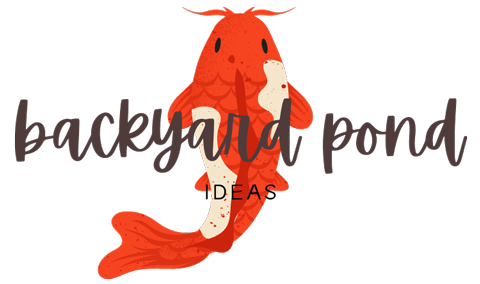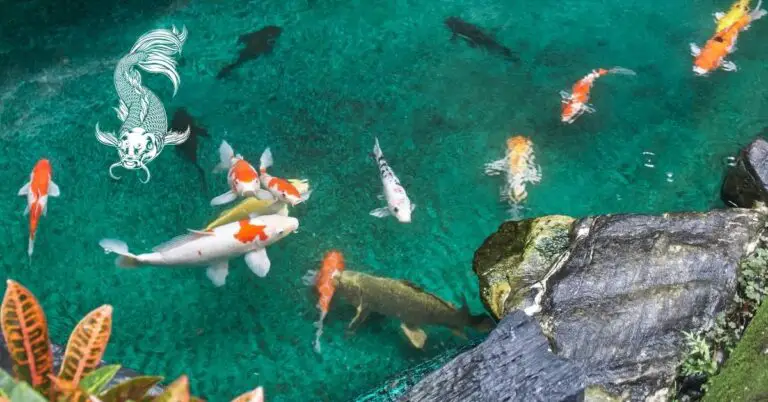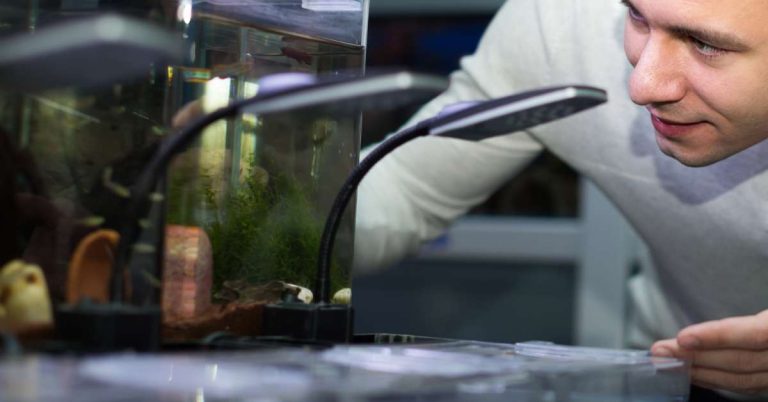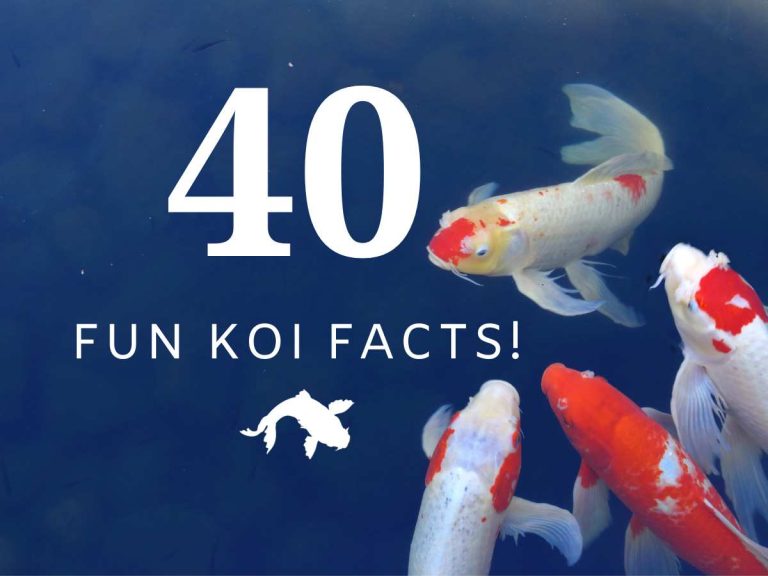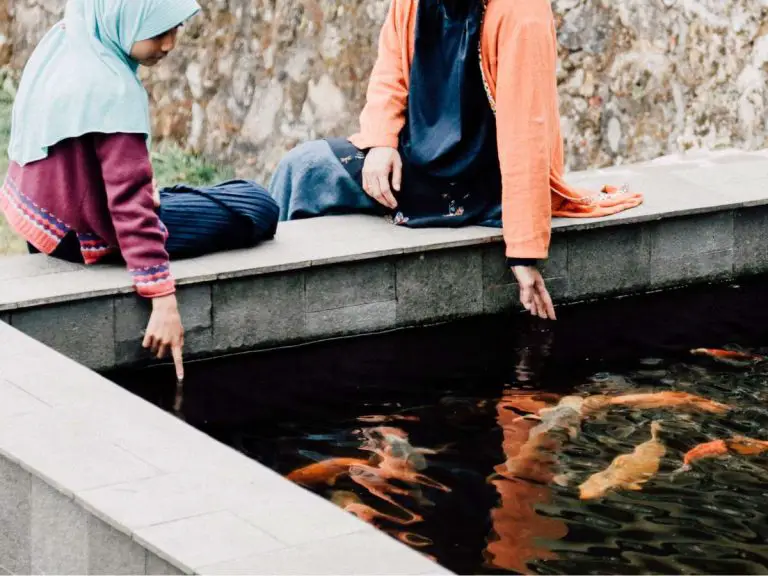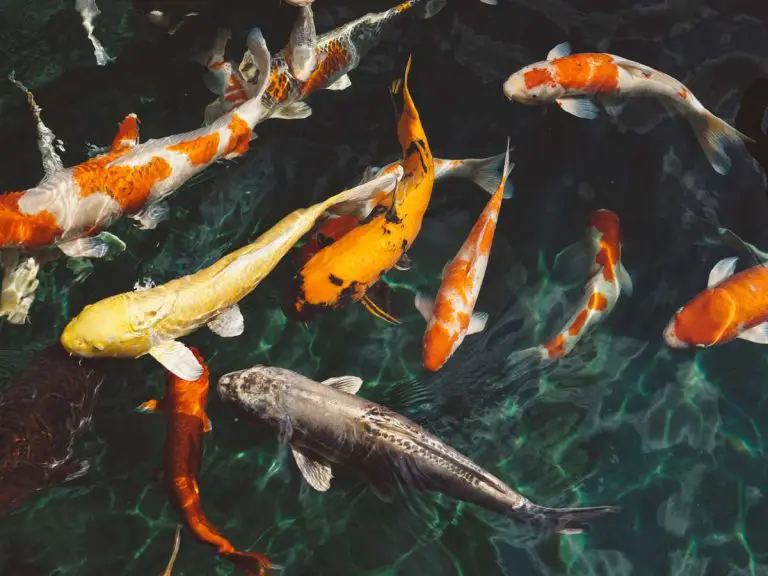Best Koi Pond Mates: Discover Compatible Fish and Other Animals for a Harmonious Pond Environment
Looking for the perfect companions for the beloved koi fish in your backyard pond? Look no further! In this article, we’re exploring the best koi pond mates to ensure a harmonious and captivating underwater community.
There are several fish and other aquatic creatures that can happily coexist with koi fish in your pond. Whether you’re considering adding different fish species or non-fish companions (like frogs, for example), it’s important to understand the needs and behaviors of both.
In this article, we’re covering all the information you need to make the best decision for your koi pond. This includes highlight compatible fish species, what to consider before introducing new fish, and how to successfully introduce and care for your new aquatic pals.
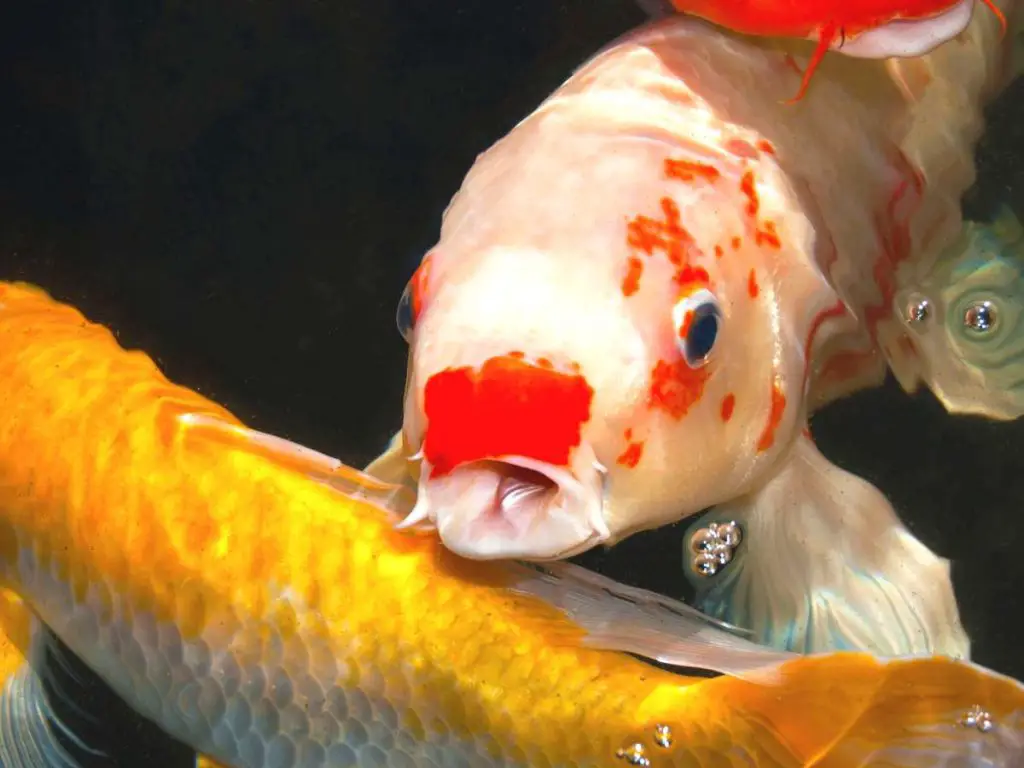
Factors to consider before introducing new fish to a koi pond
Before introducing new fish to your koi pond, you’ll need to consider the following factors to ensure the health and well-being of all the fish in your pond, as well as the overall harmony of your aquatic community.
Water quality requirements
The first factor to consider is the water quality requirements of the fish you want to introduce. Different fish species have specific needs when it comes to pH levels, temperature, and oxygen levels in the water. It’s crucial to understand and meet these requirements to create a suitable environment for all your pond mates.
For example, koi fish thrive in water with a pH level between 7 and 8.5, and a temperature range of 65-75 degrees Fahrenheit. They also require well-oxygenated water to support their active lifestyles. Research the specific needs of any new fish you plan to introduce to ensure they can coexist comfortably with your existing koi.
Pond size
The size of your pond is also a crucial factor to consider before adding new fish. Adequate space is essential to prevent overcrowding, which can lead to stress, territorial disputes, and compromised water quality. Fish need room to swim, explore, and establish their territories.
Take into account the current number and size of your koi fish and consider how additional fish will impact the available space. A general rule of thumb is to provide at least 100 gallons of water per adult koi, and even more for larger fish or those that tend to be more active. Ensure your pond can accommodate the new fish comfortably without exceeding its capacity.
Compatibility of behavior and feeding habits
When adding new fish to your koi pond, you should also consider their behavior and feeding habits. Some fish species may have aggressive tendencies or incompatible feeding habits, which can lead to conflicts or competition for food.
It’s crucial to choose fish with similar temperaments to your koi, ensuring a peaceful and harmonious community. Do your research on the behavior and feeding habits of potential pond mates to determine if they are compatible with your koi fish. Avoid introducing aggressive or territorial species that may harass or harm your koi.
13 Compatible fish species for koi ponds
So you and your pond are ready for some new animals. What should you choose?
Thankfully, many compatible fish species that can coexist peacefully with koi fish. The following are some of the most popular potential companions for your koi:
- Goldfish (Carassius auratus)
- Compatibility: High
- Water Conditions: Similar to koi; prefers water temperatures between 65-75°F.
- Notes: Goldfish are often considered the best tank mates for koi due to their similar care requirements.
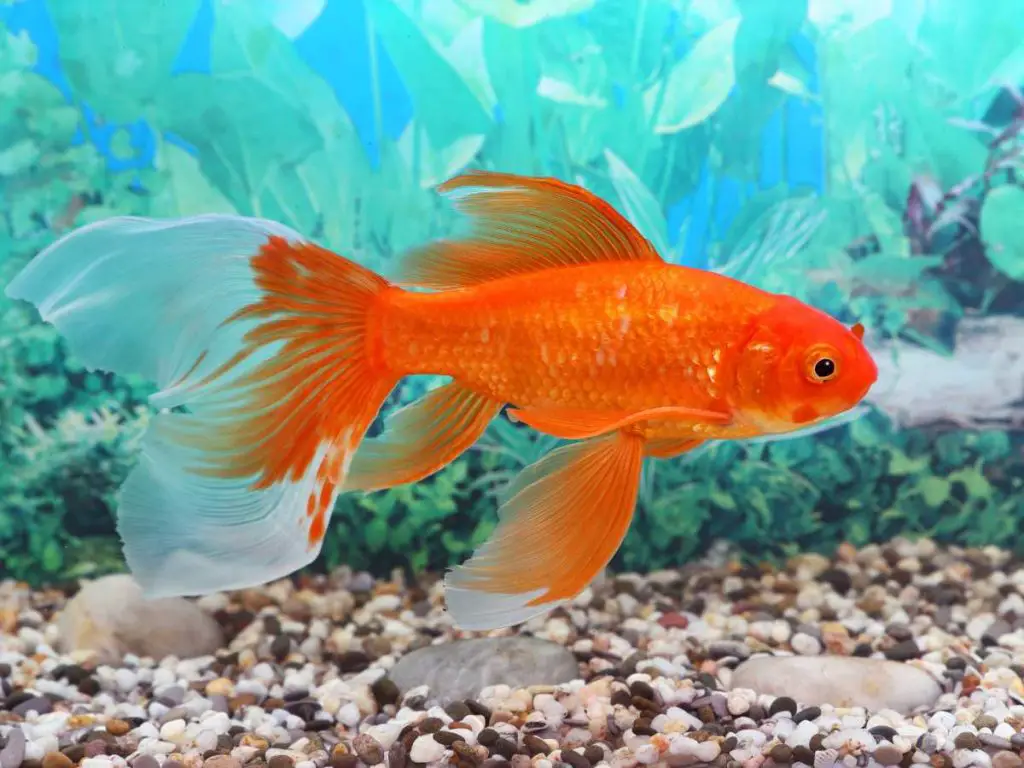
Like we’ll cover further people, it’s important to remember that compatibility can vary depending on various factors such as tank size, water conditions, and individual fish temperament. So while this is a comprehensive list of fish species that can live with koi, the results in your own tank or backyard pond may vary.
- Plecostomus (Hypostomus plecostomus)
- Compatibility: Moderate
- Water Conditions: Prefers warmer water but can adapt.
- Notes: Useful for algae control but can grow quite large.
- Rosy Red Minnow (Pimephales promelas)
- Compatibility: High
- Water Conditions: Tolerant of a wide range of conditions.
- Notes: Often used as feeder fish, they are hardy and can coexist well with koi.
- Golden Orfe (Leuciscus idus)
- Compatibility: High
- Water Conditions: Similar to koi; prefers water temperatures between 65-75°F.
- Notes: Fast swimmers and very active during the day.
- Weather Loach (Misgurnus anguillicaudatus)
- Compatibility: Moderate to High
- Water Conditions: Prefers cooler water.
- Notes: Known for their ability to predict weather changes.
- Zebra Danio (Danio rerio)
- Compatibility: Low to Moderate
- Water Conditions: Prefers water temperatures between 65-77°F.
- Notes: Smaller than koi and more suitable for larger ponds where they can avoid koi.
- White Cloud Mountain Minnow (Tanichthys albonubes)
- Compatibility: Moderate
- Water Conditions: Prefers cooler water, around 60-72°F.
- Notes: Smaller fish that do best in a large pond with plenty of hiding spots.
- Sturgeon (Acipenseridae)
- Compatibility: Moderate
- Water Conditions: Requires high-quality water.
- Notes: Not recommended for small ponds due to their large size.
- Guppy (Poecilia reticulata)
- Compatibility: Low
- Water Conditions: Prefers warmer water, around 75-82°F.
- Notes: Suitable only for large ponds where they have space to avoid koi.
- Swordtail (Xiphophorus hellerii)
- Compatibility: Low to Moderate
- Water Conditions: Prefers water temperatures between 65-77°F.
- Notes: Active swimmers but need plenty of space to avoid larger koi.
- Shubunkin (Carassius auratus)
- Compatibility: High
- Water Conditions: Similar to koi; prefers water temperatures between 65-75°F.
- Notes: A type of goldfish that is often mistaken for koi due to its colorful appearance. They are hardy and can coexist well with koi.
- Bitterling (Rhodeus amarus)
- Compatibility: Moderate to High
- Water Conditions: Prefers cooler water, around 60-70°F.
- Notes: Bitterlings have a unique relationship with freshwater mussels, in which they lay their eggs inside the mussels. They are peaceful and can coexist with koi.
- Tench (Tinca tinca)
- Compatibility: High
- Water Conditions: Tolerant of a wide range of conditions but prefers cooler water.
- Notes: Also known as the “doctor fish” due to an old belief that they could heal sick fish. They are bottom dwellers and are known to be very peaceful.
Table: Fish species compatible with koi fish
| Fish Species | Compatibility | Water Conditions | Notes |
|---|---|---|---|
| Goldfish (Carassius auratus) | High | 65-75°F | Best tank mates for koi due to similar care requirements. |
| Plecostomus | Moderate | Adaptable to warmer water | Useful for algae control but can grow large. |
| Rosy Red Minnow | High | Wide range of conditions | Hardy and can coexist well with koi. |
| Golden Orfe | High | 65-75°F | Fast swimmers and active during the day. |
| Weather Loach | Moderate-High | Cooler water | Known for predicting weather changes. |
| Zebra Danio | Low-Moderate | 65-77°F | Suitable for larger ponds to avoid koi. |
| White Cloud Mountain Minnow | Moderate | 60-72°F | Best in large ponds with hiding spots. |
| Sturgeon | Moderate | High-quality water | Not recommended for small ponds due to size. |
| Guppy | Low | 75-82°F | Suitable only for large ponds to avoid koi. |
| Swordtail | Low-Moderate | 65-77°F | Need space to avoid larger koi. |
| Shubunkin | High | 65-75°F | Often mistaken for koi due to color. Coexists well with koi. |
| Bitterling | Moderate-High | 60-70°F | Have a unique relationship with freshwater mussels. Peaceful with koi. |
| Tench | High | Wide range but prefers cooler water | Known as the “doctor fish”. Peaceful bottom dwellers. |
5 Suitable non-fish companions for koi ponds
By selecting compatible species for your koi, you can create a diverse and harmonious pond ecosystem. The following animal species that usually cohabitate peacefully with koi in a pond environment (although again, you’ll want to look at important considerations like pond size and water quality whenever introducing a new animal to your ecosystem).
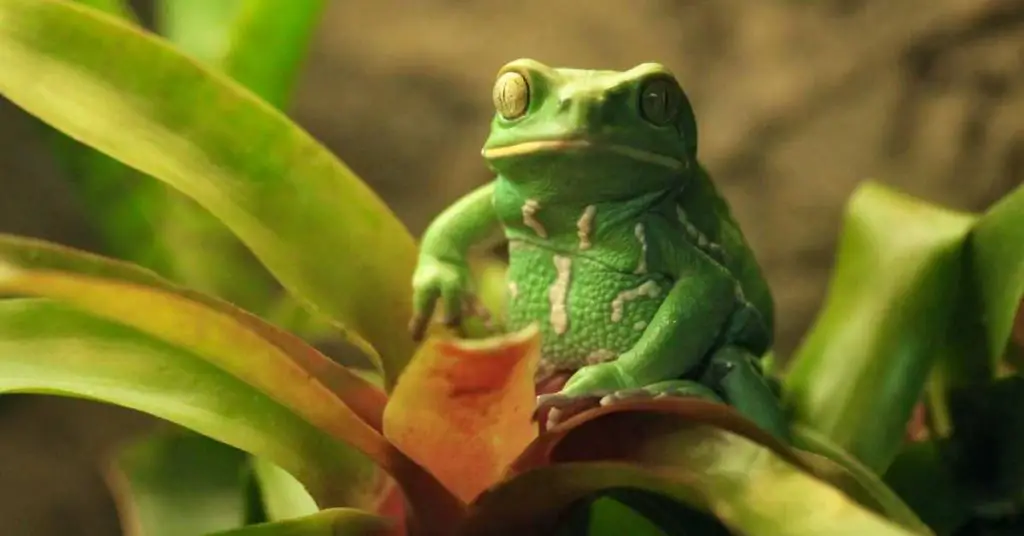
- Frogs and Toads
- Compatibility: High
- Pond Conditions: Prefer ponds with aquatic plants and shallow areas for basking.
- Notes: Frogs and toads can help control insect populations in the pond. They are generally peaceful and won’t bother the koi.
- Turtles (e.g., Red-eared sliders)
- Compatibility: Moderate
- Pond Conditions: Require basking areas such as logs or rocks that are exposed to sunlight.
- Notes: Some turtles might occasionally chase or nip at fish, but generally, mature koi are too large to be harmed. It’s essential to monitor their behavior.
- Snails (e.g., Trapdoor snails)
- Compatibility: High
- Pond Conditions: Prefer ponds with aquatic plants.
- Notes: Snails help in algae control and contribute to the overall cleanliness of the pond. They are harmless to koi.
- Freshwater Clams and Mussels
- Compatibility: High
- Pond Conditions: Sandy or muddy substrate for them to burrow.
- Notes: These bivalves help filter the water, removing impurities and improving water clarity. They coexist peacefully with koi.
- Waterfowl (e.g., Ducks)
- Compatibility: Moderate
- Pond Conditions: Need areas to nest and access to food sources.
- Notes: While ducks can coexist with koi, they might disturb the pond environment by stirring up the bottom and can introduce potential pathogens. It’s essential to ensure the pond is large enough to support both ducks and koi. That said, as we’ll avoid next, they may be a threat to young koi if you plan on breeding.
Species to avoid in koi ponds
When maintaining a koi pond, it’s crucial to avoid predatory species like herons, raccoons, and large water snakes, as they can pose a direct threat to the koi. Additionally, overly aggressive or territorial animals, such as certain types of ducks or turtles, should be avoided as they can disturb the pond’s balance and stress the koi.
Beyond that, here’s what to avoid when looking for your koi fish friends.
Predatory fish
Avoid introducing predatory fish into your koi pond. These fishes may pose a threat to your koi and disrupt the balance of your pond ecosystem. They could potentially harm or even eat your beloved koi. So, it’s best to steer clear of these troublemakers and keep your koi safe and happy.
Specifically, watch out for:
- Piranhas: These feisty little fish may have a notorious reputation, but they’re definitely not suitable koi pond mates. They have a voracious appetite and won’t hesitate to feast on your beloved koi.
- Silver Arowanas: Although they might look majestic, these fish are known for their predatory nature. They have a penchant for snatching up smaller fish, which could spell disaster for your koi.
Remember that koi are relatively large fish, so most domesticated pond fish won’t prey on adult koi. But some domesticated pond animals might prey on koi fry (baby koi) or smaller, younger koi. Here are some domesticated pond animals that could be predatory towards koi, especially the fry:
- Channel Catfish: While they are generally peaceful, larger catfish can eat smaller fish, including koi fry.
- Bullfrogs: These amphibians might consume smaller koi or koi fry.
- Large Cichlids: Some larger cichlid species can be aggressive and might prey on smaller fish.
- Turtles: Certain species of turtles, like the snapping turtle or the red-eared slider, might eat smaller fish or koi fry.
- Waterfowl: Domesticated ducks might not typically eat fish, but some species can consume koi fry.
Ultimately, it’s always wise to be safe rather than sorry. So if you’re considering introducing any new species to a koi pond, it’s crucial to research their compatibility with koi, especially if you have or plan to have koi fry.
Fish with specific water requirements
It;s also important to avoid introducing fish with demanding or incompatible water requirements into your koi pond. Each species of fish has its own unique set of preferences when it comes to water parameters, such as pH level and temperature. Ensuring suitable conditions for all species can be a real challenge.
Here are a few examples of fish with specific water requirements:
- Discus Fish: These colorful beauties prefer warmer water temperatures typically found in tropical aquariums. Trying to maintain such warm temperatures in a koi pond can be quite challenging and may lead to discomfort or even death for your koi.
- Siamese Fighting Fish: Also known as Betta fish, they require calm and still water. The vigorous activity and strong water flow in a koi pond might not be a suitable environment for them.
Tips for introducing new fish to koi ponds
Introducing new fish to your koi pond can be an exciting experience, but it’s important to take the necessary steps to ensure a smooth and successful transition. Here are some helpful tips to consider:
Quarantine
When bringing in new fish, it’s crucial to quarantine them before introducing them to your koi pond. By isolating the new fish, you can prevent potential disease transmission and protect the health of your existing fish.
Quarantine tanks or separate ponds should be set up for this purpose. The new fish should be observed for any signs of disease or stress during this time. It’s recommended to keep them in quarantine for at least two to four weeks, depending on the specific species.
Gradual acclimation
Once the quarantine period is over, it’s time to acclimate the new fish to the water conditions in your koi pond. Sudden changes in water parameters can cause stress and potential health issues, so a gradual adaptation is important.
Start by floating the bag or container containing the new fish on the surface of the pond for about 15 minutes. This allows the water temperature to equalize. Then, slowly begin adding small amounts of pond water to the bag over the course of the next hour. This will help the fish adjust to the pond’s temperature and chemistry.
After the acclimation period, carefully release the new fish into the pond and observe their behavior. Avoid overcrowding and introduce new fish in small groups to minimize stress on both the existing and new inhabitants of the pond.
Related: Koi fish sex identification
Monitoring and care for a harmonious koi pond community
In order to maintain a harmonious koi pond community, it is essential to regularly monitor the water quality and provide proper care for all the fish and aquatic species. This will ensure optimal conditions and prevent any potential issues from arising.
Regular water testing
Testing the water quality in your koi pond is crucial to keep all the fish healthy and thriving. By regularly testing the water, you can ensure that the pH level, temperature, and oxygen levels are within the appropriate range for your fish and aquatic companions. It’s like taking a quick health check-up for your pond!
Early detection of any water quality issues can help you take necessary action before it becomes a bigger problem. Whether it’s investing in a reliable test kit or seeking professional help, testing your pond water is a simple and effective way to ensure the well-being of your koi and their companions.
Balanced feeding
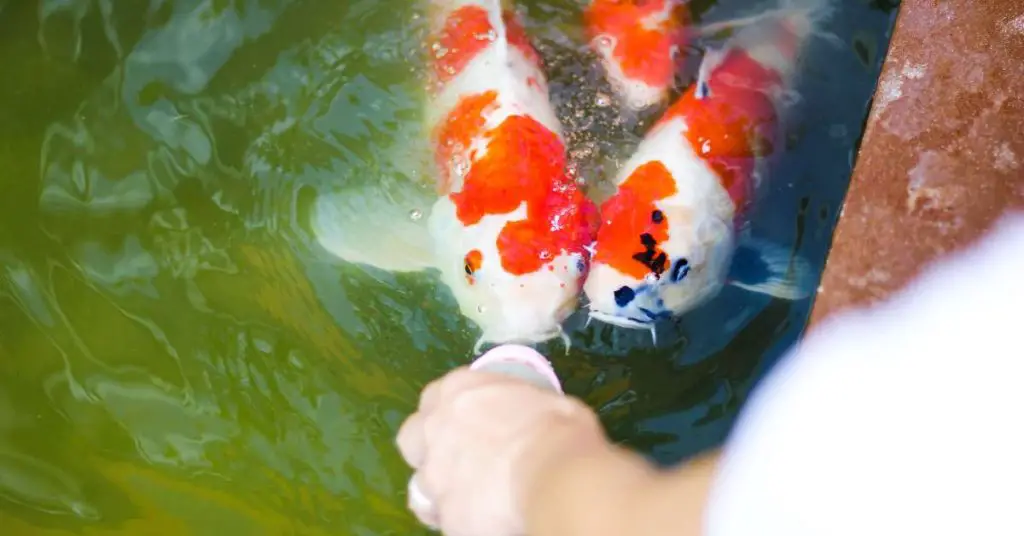
Feeding all the fish in your koi pond a balanced diet is essential for their health and overall harmony in the pond. Each species has specific nutritional requirements, and it’s crucial to provide appropriate food for everyone. Consider it like a buffet where each dish suits the specific taste and needs of each attendee!
Overfeeding can be a common mistake that leads to excess waste and potential conflicts among fish. It’s important to feed your koi and their companions the right amount of food that they can consume within a few minutes. This will prevent leftover food from rotting in the pond and creating water quality issues. Remember, a happy stomach means happy fish!
Key Takeaways
So there you have it, a comprehensive guide to finding the best companions for your koi pond! We’ve covered a lot of ground, but let’s quickly recap the main points:
- Water quality requirements like pH level, temperature, and oxygen levels should be considered before introducing new fish.
- It’s crucial to ensure there is adequate space in your pond and avoid overcrowding.
- Fish species like goldfish, shubunkin, and white cloud mountain minnow can be compatible and peaceful companions for koi.
- Non-fish companions like snails and frogs can contribute to a healthy pond ecosystem.
- Avoid predatory fish and those with specific water requirements that may disrupt the harmony of your pond.
- Quarantine new fish to prevent disease transmission, and acclimate them gradually to their new environment.
- Regular water testing and balanced feeding are essential for maintaining optimal conditions and avoiding conflicts among fish.
The key to a successful koi pond community lies in compatibility and proper care. By following the tips and information provided here, you’ll be well on your way to creating a thriving and harmonious pond environment for all your aquatic friends.
Related Questions
1. Can I keep turtles with my koi fish in the pond?
Absolutely! Turtles can make great companions for koi fish in a pond. However, it’s important to choose turtle species that are compatible with the water conditions and temperature of the pond. Turtles and koi fish can coexist peacefully as long as there is enough space and hiding spots for both. Keep in mind that turtles may compete with your koi for food, so it’s important to ensure everyone is getting their fair share.
2. Are there any plants that can be added to a koi pond?
Yes, there are several aquatic plants that can thrive in a koi pond. Plants such as water lilies, water hyacinths, and water lettuce not only add beauty to your pond but also provide shelter and protection for your koi fish. These plants can help oxygenate the water and provide shade, which is beneficial for the overall health and well-being of the fish. Just make sure to choose plants that are compatible with the water conditions and can withstand the occasional nibbling from koi fish.
